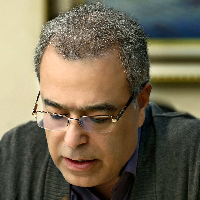Measuring the Desirability of Living in Urban Infill Development with Emphasis on Fuzzy Logic, Case Study: District No. 19 of Tehran Municipality
Author(s):
Abstract:
Increasing urban population and uncontrolled immigration to metropolitans on the one hand and lack of effective urban planning on the other hand¡ not only resulted in increasing constructing in peripheral areas of cities¡ but also excessive and unplanned exploiting of resources and degradation of agricultural lands. In the meantime¡ because of established infrastructures and urban facilities; inter-city lands considered as a valuable opportunity¡ hence¡ there is no need to dedicate huge investments and use of resources to convert raw land to urban land. In other words¡ infill development could be a serious solution with the aim of the optimum use of inter-city lands and replication to citizens demand in offering different services. This research has been conducted the basis of measuring the residential desirables according to infill development indicators in the distinct no.19 of Tehran municipality. This kind of development focuses on the construction of residential units and business centers within cities which can be considered in different types such as construction in the interior parts¡ re-use of land and Brown fields¡ renovation¡ rehabilitation¡ and development of existing sites. It is worth nothing that in the most of fulfilled studies¡ the advantages and barriers of implementing the infill development and its outcomes have been discussed¡ and some of the decision making models such as SWOT analysis and GIS software are applied. In this study a new synthetic methodology has been used utilizing LISREL software and Fuzzy multi attributive decision making (MADM) model on the basis of urban infill development in district no.19 of Tehran municipality. Fuzzy logic decision making model is applied to choose optimum sub-district for infill development implementation because of complex urban problems. In order to decision making and choose the optimum sub-district¡ more effective indices of number 19 are determined in five main categories as: physical-space¡ infrastructures¡ economic¡ social¡ and environmental. In order to scrutinize indicators¡ Spss and Lisrel software is used to gain Data analysis of questionnaires. Utility determining of the indices is done using utility function and fuzzy ranking of utility values. Bonison weighting method (trapezoidal number method) is used to convert qualitative factors to Fuzzy quantitative factors ( Fuzzification step). Finally¡ Yager methods is applied to convert fuzzy numbers to non-fuzzy numbers (de-fuzzification step). Based on the fuzzy logic decision making model¡ utility values of triple sub-districts was determined which de-fuzzier correspond values are as following¡ respectively: 21.56¡ 15.16 and 13.22. The following relationship is established between them: Therefore¡ sub-district one is selected as optimum one for infill development implementation. Access to services¡ urban infrastructures and the amount of urban facilities¡ investment status¡ participation of investors¡ housing market are indices which very important weighting has been allocated to them. Because of including mentioned indices in sub-district one; it was selected as optimum zone for infill development. It is worth nothing that the portions of prone land for infill development implementation in triple sub-districts are 25%¡ 37% and 72%. As such¡ indicators related with the supply of urban infrastructures and services in Infill development are considered as important and limiting factors and according to the findings of the present study it can be imagined that in spite of the existence of developable vacant¡ barren¡ and abandoned lands¡ due to lack of urban infrastructures and services¡ it is not possible to increase the population. According to the results¡ identifying and redevelopment of brown field and vacant lands or under-used parceles are not sufficient to rectify the over-populatin and housing demands problems. Besides the above mentioned capacities¡ it is necessary to implement proceeding in order to identify and utilize the other capacities of infill development such as residential segregation¡ redevelopment of residential areas and parking. It should also be kept in mind that the factors such as lack of regulations and executive instructions¡ subsidiary rules of local governments and lack of local institution from infill development can strongly limit infill development implementation. But¡ creating legal tendency¡ support of civil society¡ and codification of community and local participation strategies can play effective role in its achievement.
Keywords:
Language:
Persian
Published:
Journal of Architect, Urban Design & Urban Planning, Volume:6 Issue: 11, 2013
Pages:
349 to 361
magiran.com/p1597849
دانلود و مطالعه متن این مقاله با یکی از روشهای زیر امکان پذیر است:
اشتراک شخصی
با عضویت و پرداخت آنلاین حق اشتراک یکساله به مبلغ 1,390,000ريال میتوانید 70 عنوان مطلب دانلود کنید!
اشتراک سازمانی
به کتابخانه دانشگاه یا محل کار خود پیشنهاد کنید تا اشتراک سازمانی این پایگاه را برای دسترسی نامحدود همه کاربران به متن مطالب تهیه نمایند!
توجه!
- حق عضویت دریافتی صرف حمایت از نشریات عضو و نگهداری، تکمیل و توسعه مگیران میشود.
- پرداخت حق اشتراک و دانلود مقالات اجازه بازنشر آن در سایر رسانههای چاپی و دیجیتال را به کاربر نمیدهد.
In order to view content subscription is required
Personal subscription
Subscribe magiran.com for 70 € euros via PayPal and download 70 articles during a year.
Organization subscription
Please contact us to subscribe your university or library for unlimited access!



